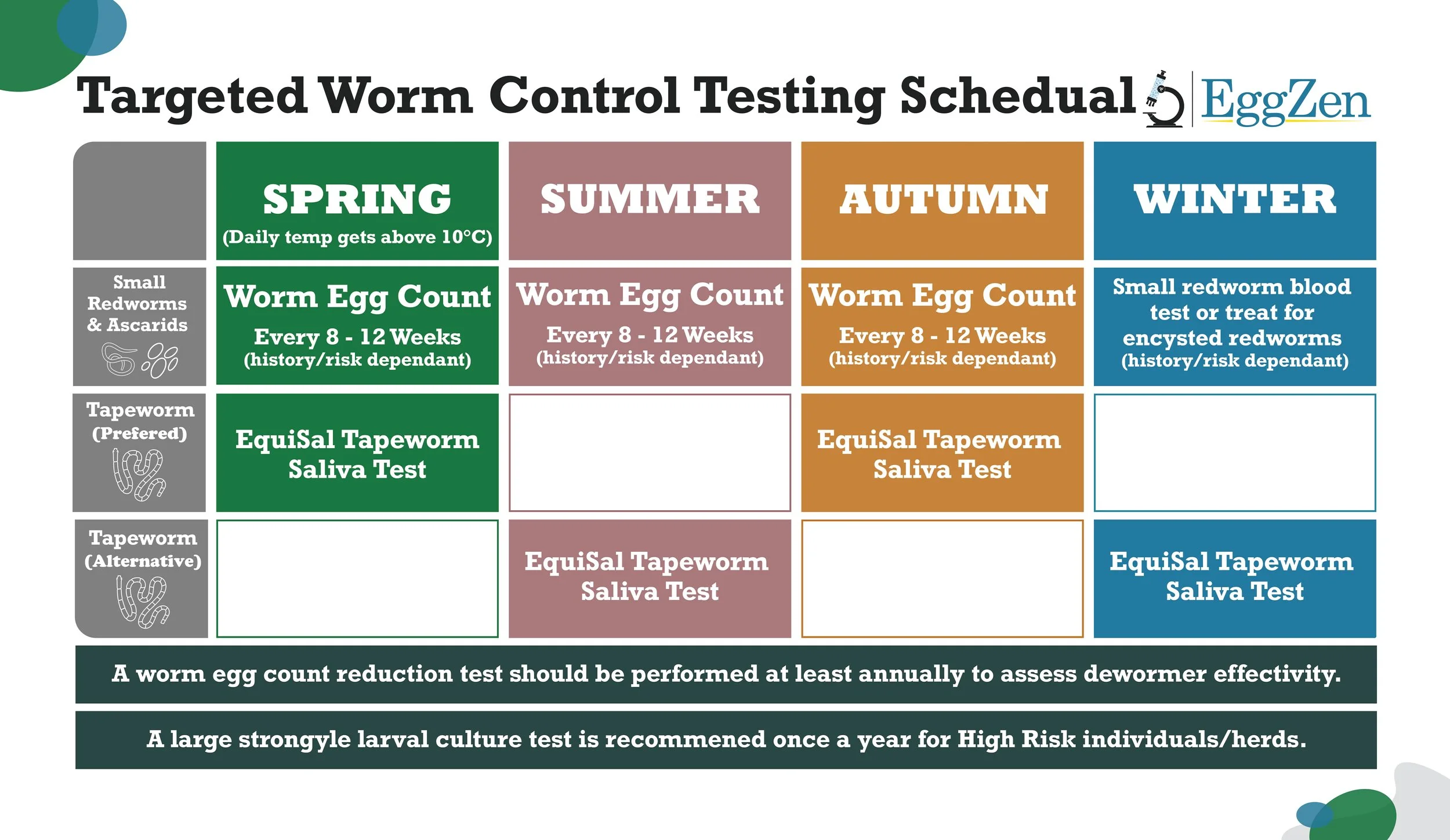Equine Testing
We know your horse isn’t just a horse!
It’s your four-legged therapist and your best maned friend. At Eggzen, we speak fluent equine (even if they mostly respond with snorts).
Your horse’s health starts with accurate information, and that begins with a fresh, reliable sample. At Eggzen, we understand island life — and how much we’re all at the mercy of the Irish Sea, with horse owners reporting having experienced frustrating delays, needing to resend samples or wait for new kits to arrive, only to start the whole process again.
That’s why all of our dung-based testing is carried out right here on the island — eliminating delays and ensuring you get fast, accurate, science-backed results.
Horse owners switching to our on-island services have reported,
“Noticeable changes in their horses’ worm counts, allowing them new insights on improving their management strategies.”
Want to know more, or aren’t sure what you are looking for? Reach out to us at contact@eggzen.co.uk or contact us here.
Looking to purchase kits? Visit our store.
About the Tests
-
What are Worm Egg Counts (WECs)
Worm Egg Counts (WECs) are an essential and responsible part of your horse care routine, helping to maintain healthier horses and support a more sustainable approach to parasite control.
Every grazing animal is exposed to, and at risk from, internal (endo-) parasites. The most common parasite affecting horses today is the small redworm.
WECs are a simple, non-invasive test used to determine the number of roundworm eggs (including both large and small redworms, and ascarids) being shed in your horse’s dung, expressed as eggs per gram (epg). By monitoring each horse’s egg-shedding output, we can identify which individuals require treatment—minimizing pasture contamination and managing overall worm burden.
Why not just routine treat like we always have?
Routine treatment was once the standard approach for managing worm burdens in horses and on pastures. However, this outdated practice led to the indiscriminate use of wormers.
Overuse encourages resistance to the limited number of effective wormers available, increases costs, and adds unnecessary handling and management stress. It can also harm the microfauna in your horse’s environment, especially when post-treatment instructions aren’t properly followed.
Not all horses carry a significant worm burden—just as with humans, their immune systems play a key role in natural parasite control. Only horses that need treatment should be target-treated.
This modern, targeted approach keeps your horse healthier, saves money, and helps preserve the effectiveness of wormers for the future.
When should I perform WECs?
Regular WECs should be carried out throughout the grazing season. Depending on your horse’s risk factors (such as age, travel frequency, herd size, yard type, and management practices), WECs should typically be performed every 8–12 weeks.
We’ll usually recommend your next test date based on the previous result, while also considering your horse’s individual risk profile.
You can assess your horse’s risk here using EquiSal’s free “What’s Your Worm Risk?” tool.
As winter approaches, horses considered low risk - and have consistently shown WEC results under 200 epg over the past year -may be good candidates for a Small Redworm Blood Test.
Horses in the high-risk category, especially those with WECs above 200 epg during the year, are better suited for a routine winter treatment targeting encysted small redworms.WEC kits are available for purchase in our store.
-
Unlike round worm eggs, tapeworm eggs are periodically shed in equine faeces. Thus, although they may occasionally be detected in a horse’s droppings by chance, this is not a reliable method of determining whether an individual animal is infected with tapeworm. Tapeworms require an intermediate host—the oribatid mite—to complete their life cycle. Horses become infected only when they ingest these mites while grazing on pasture. This means that while one horse in the herd may be infected, others may not be.
Published test data on the use of the EquiSal tapeworm test on 237 horses over a one-year period demonstrated that 85% of the horses tested did not require treatment for tapeworm (Lightbody et al., 2017).
Historically, the only accurate way to detect if a horse was infected was to use a blood test to identify tapeworm antibodies. The EquiSal saliva test is an easy-to-use, non-invasive alternative, detecting antibodies in your horse’s saliva. Only if your horse’s test returns a borderline or moderate/high antibody result will treatment be necessary. Ideally, horses should be tested twice a year – in spring and autumn. An alternative schedule in summer and winter is still beneficial if the spring/autumn window is missed.
For horses with borderline or moderate/high results, a follow-up test should be conducted three months post-treatment to monitor parasite burden. To assess the efficacy of the administered anthelmintic, the test may be repeated two months after treatment.
-
A Wormer Drench Test is a follow-up test used to check whether a deworming treatment has worked effectively. This test is done by collecting a second sample 10 - 14 days post treatment. Efficacy of the treatment is measured by the percentage reduction in the egg count from before treatment to after treatment. A reduction of 90% or more indicates that the wormer has worked effectively while a reduction of less than 90 % indicates that further investigation into wormer resistance should be made.
A reduction of less than 90% does not automatically mean the local worm population is resistant to the wormer used, and other reasons for treatment failure should be investigated.
A worm drench test should be performed annually to monitor the efficacy of the wormers you use.
-
A detailed process on sampling can be found here.
-
Pinworm Test
Liver Fluke Testing
Lungworm Testing
Worm Egg Reappearance Period Testing
Large Strongyle Testing
And more!

